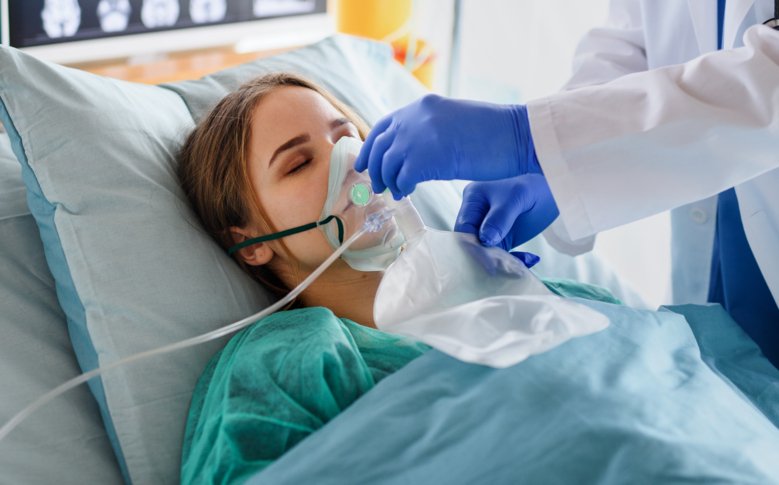40 simple steps to reduce deaths from critical illness

Critical illness results in millions of deaths globally every year, many of which could be avoided with basic, life-saving care. Now, a new study led by researchers at Karolinska Institutet outlines a baseline bundle of care interventions that global experts agree should be available for all critically ill patients. The study, published in the journal BMJ Global Health, provides a blueprint for hospitals on how to reduce preventable deaths, including from COVID-19.
Critical illness occurs when a patient’s vital organs become dysfunctional and there is a risk of imminent death. In critical illness, the patient’s airways, breathing or circulation may become compromised and early identification of the problem and timely care can be lifesaving. Unfortunately, this care is sometimes neglected in hospital settings around the world and improvements in the way healthcare manages critical illness could save many lives.
To this end, a group of clinicians and scientists, led by researchers at Karolinska Institutet, Ifakara Health Institute in Tanzania and the London School of Hygiene & Tropical Medicine (LSHTM), has developed the Essential Emergency and Critical Care (EECC) concept.
EECC
EECC describes a set of treatments and actions that should be feasible to implement in all hospital settings around the world. These are life-saving practices with low complexity and low cost that a group of more than 250 clinical experts from nearly 60 countries agreed would benefit critically ill patients.
In the study, the expert panel—consisting of a range of medical specialists from high- middle- and low-income countries—was asked to rate a range of proposed treatments and actions, adapted from the World Health Organization’s guidelines on Basic Emergency Care. Over three rounds, a consensus of over 90 percent of experts was reached, leading to a package of 40 clinical processes and 67 hospital readiness requirements, plus an additional seven and nine, respectively, for COVID-19.
Essential toolbox

“With the EECC package, we present health workers and policy makers with an essential toolbox consisting of effective and low-cost care that all hospitals should be able to provide,” says corresponding author Carl Otto Schell, PhD student at the Department of Global Public Health, Karolinska Institutet, and consultant physician at Nyköpings Hospital. “By adopting these, in some cases small changes in practices, hospitals around the world would be able to reduce the high mortality rates of critically ill patients.”
Examples of what EECC includes are:
* The identification of critical illness by regular assessment of vital signs, such as pulse rate, oxygen saturation and blood pressure.
* The care of patients with a threatened airway, difficulty breathing, compromised circulation or a reduced level of consciousness using simple things like body positioning, oxygen therapy, and intravenous fluids.
* General processes aimed at facilitating a safe and functioning workflow, for example communication practices and separation of patients with contagious diseases.
* A list of items (equipment, consumables, drugs, training, infrastructure and more) needed for a hospital to be ready to identify and care for critically ill patients.
* A special section on how to care for critically ill COVID-19 patients, including the frequent monitoring of oxygen saturation and use of heparin and corticosteroids.
Life-saving care

“The COVID-19 pandemic has brought into focus the importance of care of critically ill patients. If all hospitals in the world were enabled to provide EECC to all their critically ill patients, many lives could be saved, both during the pandemic and afterwards,” says Tim Baker, associate professor at the Department of Global Public Health, Karolinska Institutet, Ifakara Health Institute and LSHTM.
The researchers have created the EECC Network website, a community of clinicians, researchers, policy makers and members of the public who want to improve the care of critically ill patients throughout the world.
Funding for this study was provided by the Wellcome Trust and the Centre for Clinical Research Sörmland, Uppsala University. Some of the authors have declared competing interests that are outside the submitted work, including personal fees, support for meetings and participation in advisory boards. See the scientific article for more details.
Publication
“Essential Emergency and Critical Care – a consensus among global clinical experts.” Carl Otto Schell, Karima Khalid, Alexandra Wharton-Smith, Jacquie Narotso Oliwa, Hendry Robert Sawe, Nobhojit Roy, Alex Sanga, John C. Marshall, Jamie Rylance, Claudia Hanson, Raphael Kazidule Kayambankadzanja, Lee A. Wallis, Maria Jirwe, Tim Baker, and the EECC Collaborators, BMJ Global Health, online Sept. 21, 2021, doi: 10.1136/bmjgh-2021-006585
